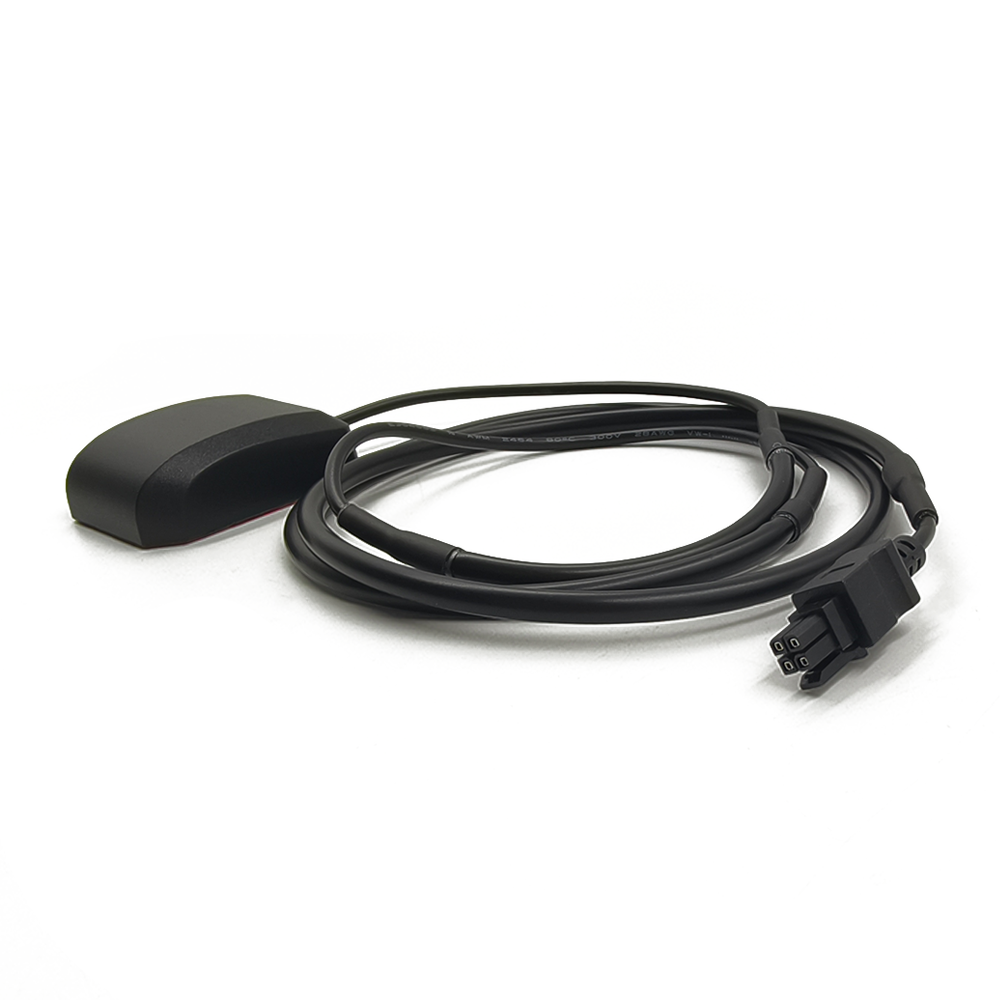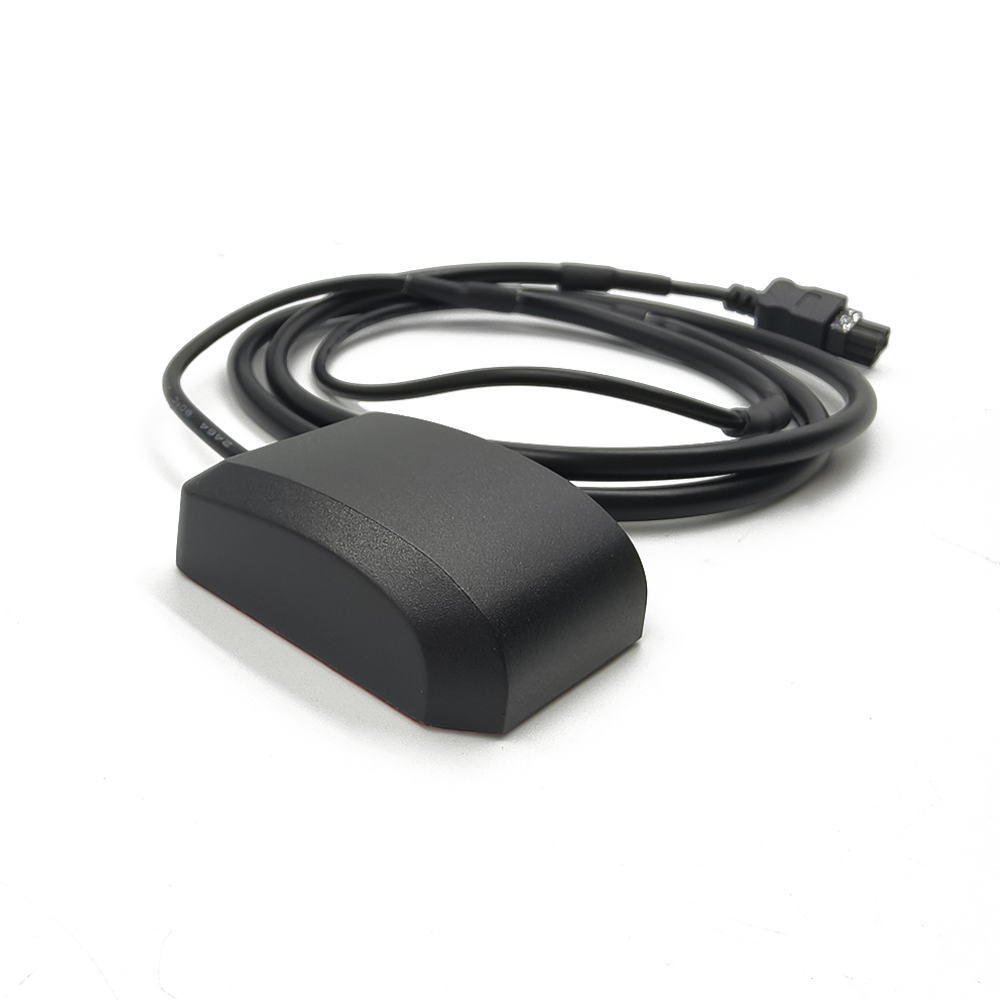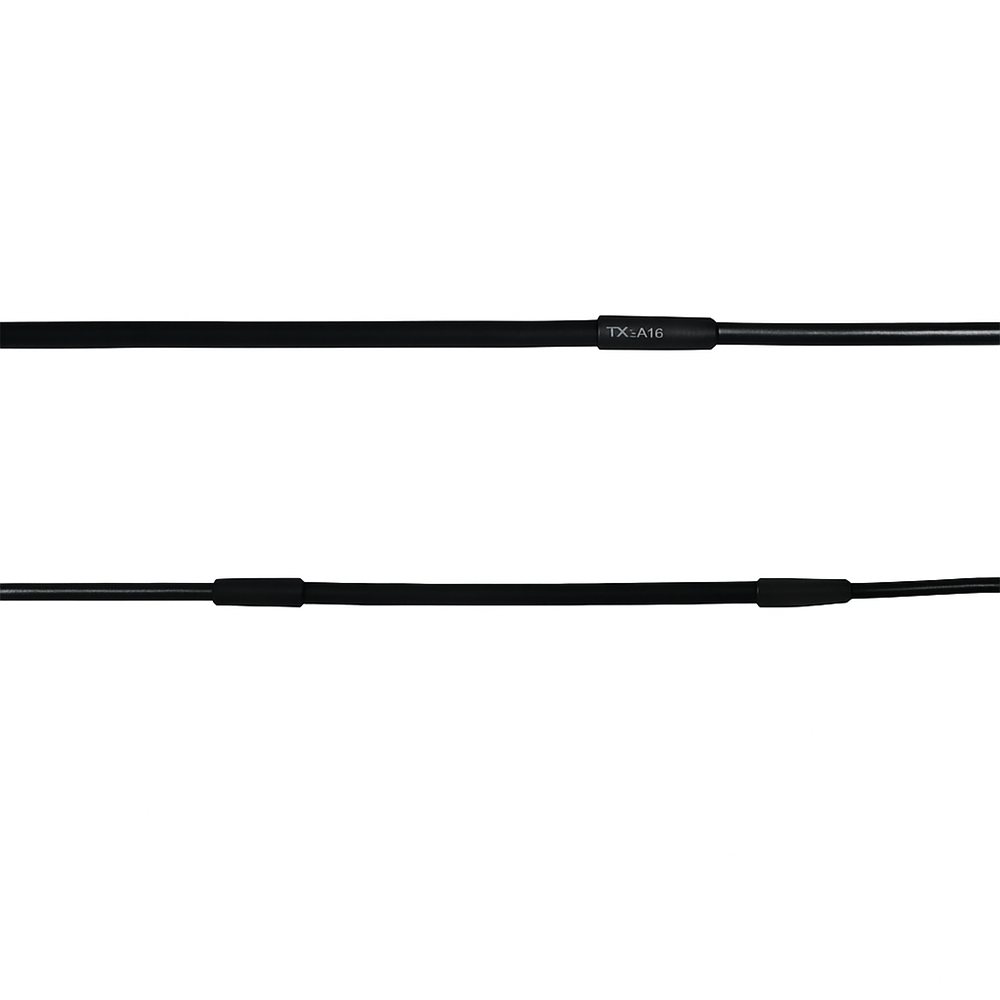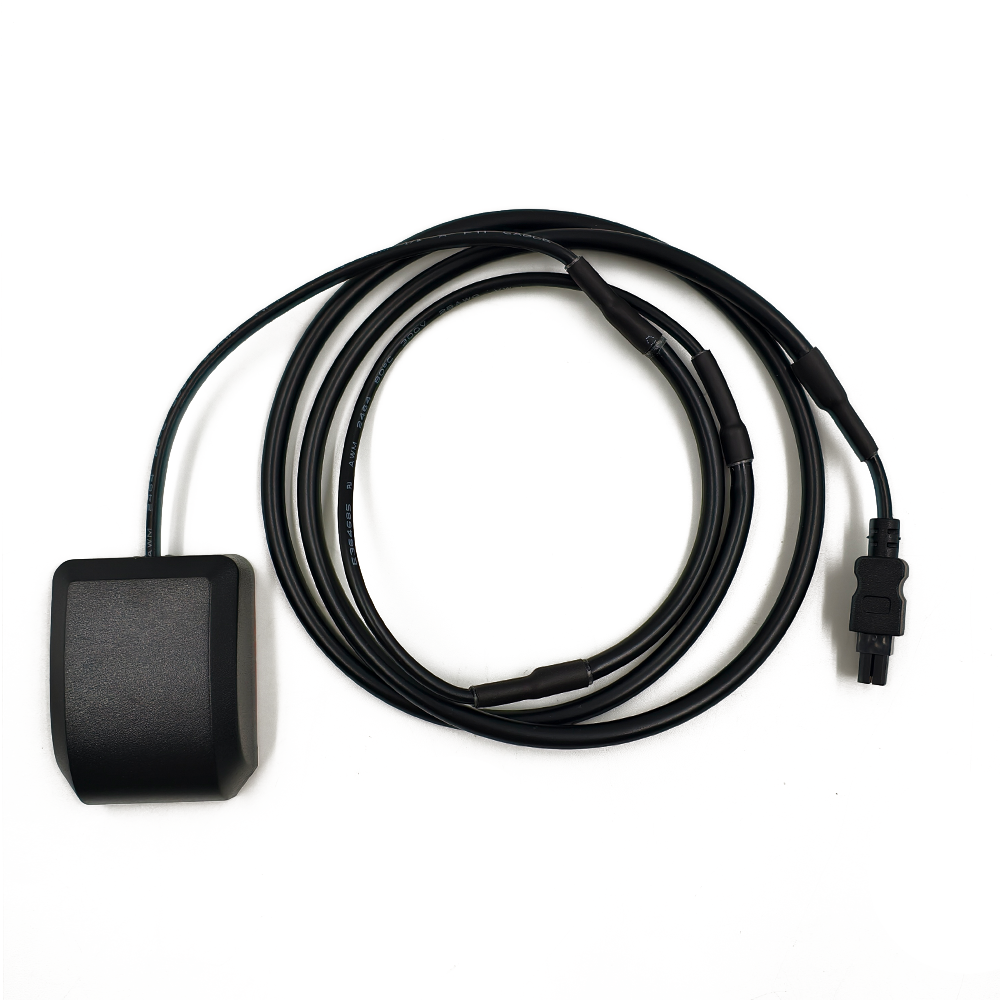Waterproof GNSS RTK external antenna systems are deployed across a wide range of industries, where precision positioning in wet or harsh environments is critical. From guiding autonomous tractors in the rain to enabling safe maritime navigation, these systems have become essential tools for professional users. As technology advances, emerging trends are poised to expand their capabilities further—addressing current challenges and unlocking new use cases. This section explores the key applications of these systems today and the trends shaping their future.
Current Applications
Precision Agriculture
In agriculture, waterproof GNSS RTK external antenna systems are the backbone of precision farming techniques—enabling farmers to optimize crop yields while reducing resource waste. These antennas are mounted on autonomous tractors, harvesters, and drones, providing centimeter-level accuracy for tasks like seeding, fertilizing, and spraying—even in wet conditions (e.g., post-rainfall or early-morning dew). For example, a tractor equipped with a waterproof RTK antenna can plant seeds in straight rows with less than 2 cm of deviation, ensuring uniform crop growth and maximizing land use. In regions with frequent rainfall (e.g., the U.S. Midwest, Southeast Asia), these antennas allow farming operations to continue without interruption, avoiding delays that could reduce yields. Additionally, drones fitted with waterproof RTK antennas can conduct crop health surveys in the rain, capturing high-resolution images that help farmers identify pest infestations or nutrient deficiencies early.
Surveying and Geospatial Mapping
Land surveyors and geospatial professionals rely on waterproof GNSS RTK external antenna systems to collect accurate data in all weather conditions. Whether mapping a construction site during a downpour, surveying a coastal wetland at high tide, or measuring a mountainous region in fog, these antennas ensure that position data remains precise and reliable. For example, in coastal surveying—where antennas are often exposed to saltwater splashes—the IP68 or IP69K rating of these systems prevents corrosion and water damage, while multi-band support captures signals even when fog weakens L1 bands. Surveyors also use these antennas for applications like boundary mapping and topographic surveys, where accuracy is critical for legal or engineering purposes. Without waterproofing, a single rainstorm could damage the antenna and force the survey to be redone—costing time and money.
Maritime Navigation and Offshore Operations
The maritime industry is one of the largest users of waterproof GNSS RTK external antenna systems, where they enable precise positioning for ships, offshore platforms, and underwater vehicles. For commercial ships, these antennas are mounted on the bridge, providing centimeter-level accuracy for tasks like docking, collision avoidance, and navigating narrow waterways (e.g., canals or coastal channels)—even in rough seas with waves splashing over the deck. Offshore oil and gas platforms use RTK antennas to position drilling rigs and supply vessels, ensuring that operations are conducted safely and efficiently in saltwater environments. Underwater remotely operated vehicles (ROVs) also use these antennas (mounted on their surface controllers) to track their position relative to the seabed, enabling precise underwater inspections or repairs. The saltwater resistance of these systems is critical here: standard antennas would corrode quickly in saltwater, but waterproof RTK antennas use materials like marine-grade aluminum and corrosion-resistant coatings to withstand harsh maritime conditions.
Construction and Infrastructure Development
In construction, waterproof GNSS RTK external antenna systems are used to guide heavy machinery (e.g., excavators, bulldozers, concrete pavers) with precision—even in rainy or dusty conditions. For example, during the construction of a highway, an excavator equipped with a waterproof RTK antenna can dig trenches to exact depths and widths, ensuring that the road base meets engineering specifications. These antennas also play a role in high-rise construction, where they are mounted on cranes to track the position of building materials (e.g., steel beams) as they are lifted to upper floors. In wet weather, when construction schedules are often delayed, these antennas allow work to continue—reducing project timelines and costs. Additionally, these antennas are used for as-built surveys, where they capture the exact position of completed infrastructure (e.g., bridges, tunnels) for documentation and maintenance purposes.
Search and Rescue (SAR) Operations
Search and rescue teams rely on waterproof GNSS RTK external antenna systems to locate missing persons or vehicles in remote or harsh environments—including forests, mountains, and flood zones. These antennas are mounted on SAR vehicles, drones, and handheld receivers, providing precise positioning data even in heavy rain or snow. For example, in a flood scenario, a drone fitted with a waterproof RTK antenna can map the affected area, identifying safe routes for rescue teams and locating survivors stranded on rooftops. Handheld RTK receivers with waterproof antennas allow rescuers to navigate through flooded terrain with centimeter-level accuracy, avoiding hazards like submerged debris. The durability of these systems is critical here: SAR operations often involve rough handling and exposure to extreme weather, so the antenna must withstand impacts, water, and temperature extremes.
Future Trends
Miniaturization and Weight Reduction
One of the most promising trends in waterproof GNSS RTK external antenna systems is the miniaturization of components—enabling smaller, lighter antennas without sacrificing performance. Manufacturers are using advanced materials (e.g., thin-film ceramics for substrates, micro-LNAs) to reduce the size of the antenna’s radiating element and electronics. For example, a next-generation waterproof RTK antenna could measure just 5–8 cm in diameter and weigh less than 100 grams—making it ideal for drone surveying and portable devices. Miniaturization also reduces wind resistance, which is critical for drones (as it extends flight time) and maritime applications (where strong winds can damage larger antennas). Additionally, lighter antennas are easier for field workers to carry, improving usability in remote areas.
Integration with 5G and Satellite Communication
The integration of waterproof GNSS RTK external antenna systems with 5G and satellite communication networks is set to revolutionize precision positioning. 5G networks offer high-speed, low-latency data transmission, which is critical for RTK systems—especially in applications like autonomous driving or drone swarms, where correction data must be delivered in real time. For example, a 5G-enabled waterproof RTK antenna can receive correction data from a base station in milliseconds, ensuring that autonomous tractors or drones adjust their position instantly. Satellite communication integration will extend this capability to remote areas (e.g., deserts, oceans) where 5G coverage is unavailable. By combining GNSS RTK with satellite communication, these antennas can provide precise positioning anywhere on Earth—even in the most isolated environments.
AI-Powered Signal Optimization
Artificial intelligence (AI) and machine learning (ML) are being integrated into waterproof GNSS RTK external antenna systems to optimize signal reception in challenging conditions. AI algorithms can analyze real-time signal data (e.g., strength, noise levels, satellite visibility) and adjust the antenna’s parameters (e.g., radiation pattern, frequency band selection) to maximize performance. For example, in heavy rain, an AI-powered antenna can switch from L1 to L5 bands (which are less affected by rain) or adjust its radiation pattern to focus on satellites with stronger signals. ML algorithms can also learn from past performance data, predicting which parameters will work best in specific environments (e.g., fog, saltwater) and adapting automatically. This will reduce the need for manual adjustments by users and improve the antenna’s reliability in extreme conditions.
Eco-Friendly and Sustainable Designs
As industries prioritize sustainability, manufacturers are developing waterproof GNSS RTK external antenna systems with eco-friendly materials and designs. This includes using recycled plastics for housings, biodegradable potting compounds, and lead-free solders for electronics. Additionally, some manufacturers are designing antennas with modular components—allowing users to replace damaged parts (e.g., seals, cables) instead of replacing the entire antenna. This reduces electronic waste and extends the antenna’s lifespan. For example, a modular waterproof RTK antenna could have a replaceable O-ring seal, which can be swapped out when it degrades—instead of discarding the entire antenna. These sustainable designs not only benefit the environment but also reduce long-term costs for users.
Enhanced Submersion Resistance
While current waterproof GNSS RTK external antenna systems can withstand temporary submersion (e.g., IP68-rated antennas can be submerged up to 1.5 meters for 30 minutes), future systems will offer enhanced submersion resistance for underwater applications. This includes using pressure-resistant housings that can withstand depths of 10 meters or more, as well as materials that are immune to corrosion from saltwater or chemicals. These advanced underwater antennas will enable new applications, such as positioning underwater ROVs for deep-sea exploration or monitoring underwater infrastructure (e.g., pipelines, cables) with centimeter-level accuracy. Additionally, enhanced submersion resistance will benefit maritime applications, where antennas may be submerged for longer periods during storms or high tides.
Conclusion
Waterproof GNSS RTK external antenna systems represent a critical intersection of precision engineering and environmental resilience, enabling centimeter-level positioning in the harshest wet and harsh environments. Throughout this analysis, we have explored how these systems address the unique needs of industries ranging from agriculture to maritime navigation—delivering uncompromised accuracy even when exposed to rain, saltwater, dust, and temperature extremes. From their robust design and construction to their integration with RTK technology, these antennas have become indispensable tools for professional users who cannot afford downtime or inaccurate data.
The overview section established the core purpose of these systems: to bridge the gap between RTK’s precision requirements and the challenges of wet environments. The design and construction segment highlighted the meticulous choices—from IP-rated housings and low-noise amplifiers to multi-band radiating elements—that enable their performance. The working principles explained how these components collaborate to capture, amplify, and transmit signals, while integrating RTK correction data to achieve centimeter-level accuracy. The advantages and challenges section balanced the benefits of durability and reliability against the realities of cost, size, and signal attenuation. Finally, the applications and future trends section demonstrated their versatility across industries and outlined how emerging technologies like AI and miniaturization will expand their capabilities.
Key takeaways from this exploration include the critical role of waterproofing in maintaining RTK performance, the value of multi-constellation/multi-band support for reliability, and the potential of emerging trends to address current limitations (e.g., size, signal attenuation). For users, these systems are more than just antennas—they are enablers of efficiency, safety, and innovation. For example, a farmer using a waterproof RTK antenna can optimize crop yields by continuing operations in the rain, while a maritime navigator relies on these systems to avoid collisions in rough seas.
Looking ahead, the future of waterproof GNSS RTK external antenna systems is defined by progress: miniaturization will make them more versatile, AI will enhance their adaptability, and sustainability will reduce their environmental impact. These advancements will unlock new applications—from deep-sea positioning to autonomous drone swarms—while making precision positioning more accessible to small businesses and individual users.
In conclusion, waterproof GNSS RTK external antenna systems are a testament to how technology can adapt to the demands of the natural world. By combining precision with resilience, they empower industries to work smarter, safer, and more efficiently—regardless of the weather or environment. As these systems continue to evolve, they will remain at the forefront of precision positioning, driving innovation and progress in the industries that rely on them.




































































 Language
Language
 En
En Cn
Cn Korean
Korean

 Home >
Home > 








 18665803017 (Macro)
18665803017 (Macro)













